| Burning Churches |
 |
| Albert, France. The Roman Catholic Basilica of Our Lady of Brebières was designed by the French architect Edmond Duthoit in 1897. The structure was completely destroyed during the war by enemy bombardments. After the war (1927-1931) the son of the architect copied his father’s drawings and successfully restored the church on its original foundation. |
 |
 |
| Tormonde, Belgium. Dendermonde (Dutch spelling) is a city in East Flanders at the mouth of the Dender River. The town has a centuries old feud with Aalst that has multiple administrative, commercial, and educational factors – all of which cultivate strong ties of historic proportions. During the war, the city of Dendermonde was one of the worst hit. The German army invaded in 1914 and proceeded to destroy at least fifty percent of the homes, offices, and merchandise centers. It is a town on which the propagandists focused. |
| Nieuport, Belgium. Nieuwpoort is a North Sea beach town located in the Flanders region. The municipality comprises the town of Nieuwpoort proper, as well as Ramskapelle and Sint-Joris. The damage seen on the card came in November 1917 while the German army was engaged in the first battle of Ypres. Hendrik Geeraert became the village hero on the day of the battle by opening the sluice gates on the mouth of the Yser River to flood the low land, which put a halt to the German Army’s advance. |
|

|

|
| Louvain, Belgium. Leuven is the capital of Belgium’s Flemish Brabant. It is located about sixteen miles east of Brussels. The earliest mention of this beautiful city is dated 691 when the Viking army visited and defeated the Frankish king. On August 25, 1914 one of the most cruel events in war-history occurred when the Catholic church and university library were deliberately distroyed by the Germans using gasoline bombs and incendiary pastilles (a handgrenaid type of weapon that fuels an already burning fire.) |
| Reims, France. Rheims is the most populous city in northern France. Today it is a modern city stretching nearly six miles along the banks of the Vesle River, just a few miles south of where the Vesle joins the much more famous Aisne. The cathedral at Reims is often confused with the Notre Dame in Paris because of its archetectual similarities. As a result of enemy hostilities in 1916 the cathedral was left in ruin and for good or bad, it became part of the anti-German propaganda campaign in which the world blaimed the enemy for targeting the religious and cultural icons of western Europe. It was in the national census of 1921 that a four-percent drop in population (the largest in the city’s history) was discovered – most of which was the result of war casualties. |
 |
 |
| Malines, Belgium. Mechlin is a city near Antwerp. One of the largest cities in north-central Belgium, Mechlin is reknowned for its large market place held weekly in the shadow of Saint Rumbold’s Roman Catholic cathedral. Construction of the church began around 1200, but the consecration did not happen until 1312. The tower (seen at left through the smoke and flames) is a flat-top tower that has served for centuries as a warehouse for city documents and a watchtower from which fire alarms were launched. |
| Dixmude, Belgium. Diksmuide is a city in West Flanders, Belgium. The main city of Diksmuide is surrounded by fourteen villages of which several are known across Europe as a dairy farming region that produces the famous butter that is also named Diksmuide. The first World War I attack on the city came on October 16, 1914, but the Belgian and French troops were able to hold their ground, but their losses were severe. The press and politicians were artful propagandists who made the public believe that their actions were strategic. Nevertheless by the time the fighting ended the town had been reduced to piles of ruin. With what was later discribed, and lauded by the war historians, were the efforts of the locals who entirely rebuilt their city by the end of the 1920s. |
 |
 |
| Ypres, Belgium. Ypres is a city in West Flanders with a history from the late eleventh century. The Dutch name Ieper is the official one, but the city’s French name Ypres is most commonly used in English. The municipality consists of ten surrounding villages and as a consequence the government offices are huge and stunning examples of gothic design. During the First World War, few public buildings escaped ruin since the area was completely engulfed as the center of the Ypres battles. |
| Ramscapelle, Belgium. Ramscapelle is a suburban part of the town of Nieuwpoort proper. Today it is a forever growing residential neighborhood, and it is also the site of the Ramscappelle Road Military Cemetery. Founded in 1917, the location is just short of two-miles east of the city of Nieuwpoort. More than 800 British are interred at the site. |
 |
| Arras, France. In April 1917, the Battle of Arras raged along a fourteen mile line known as the Western Front. For six weeks the British offensive forces attack the German defenses just east of the city of Arras. Legend tells us, “it was never quiet on the western front.” For the full story read: All Quiet on the Western Front, a novel by Erich Maria Remarque, a German veteran of World War I. |

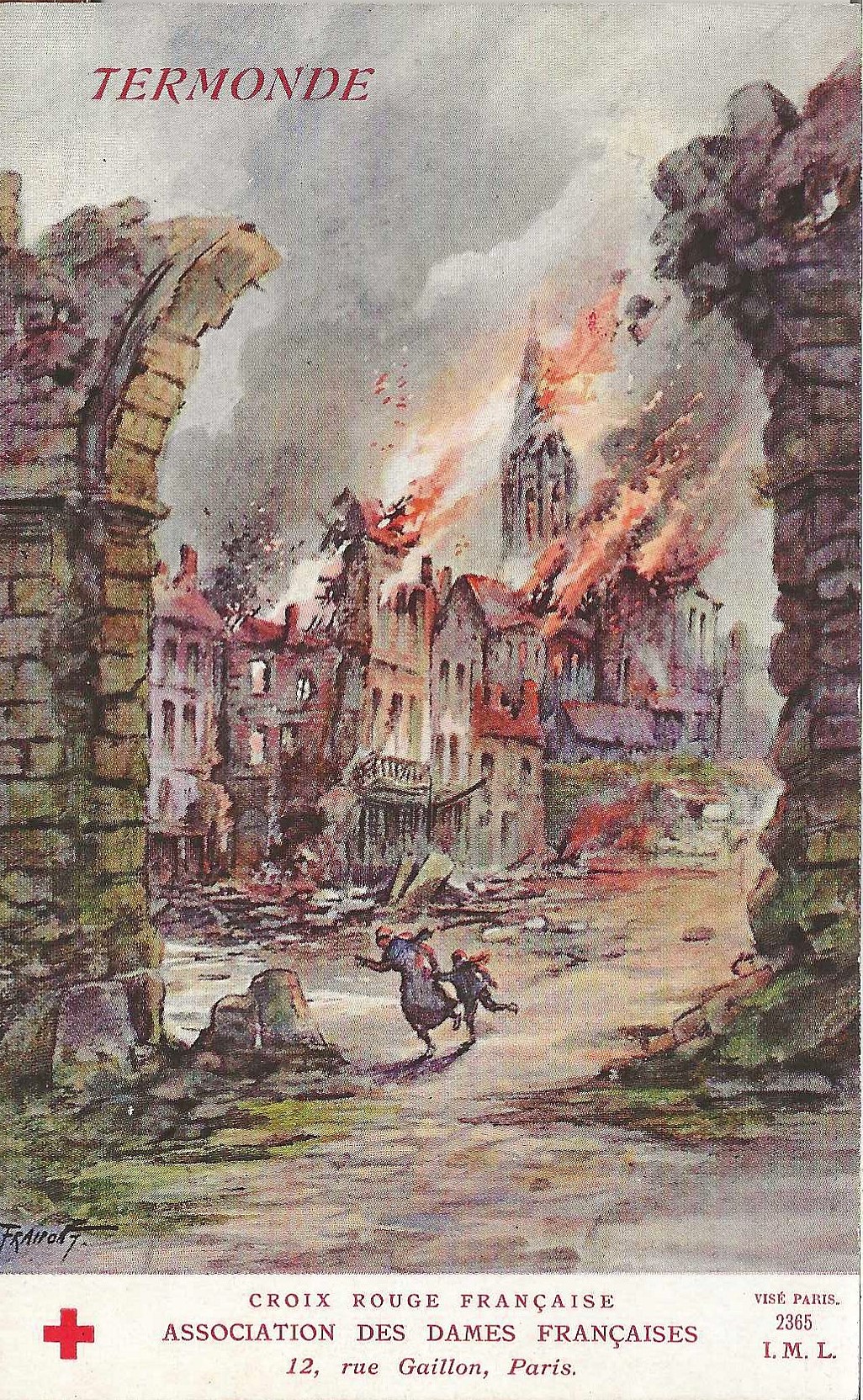
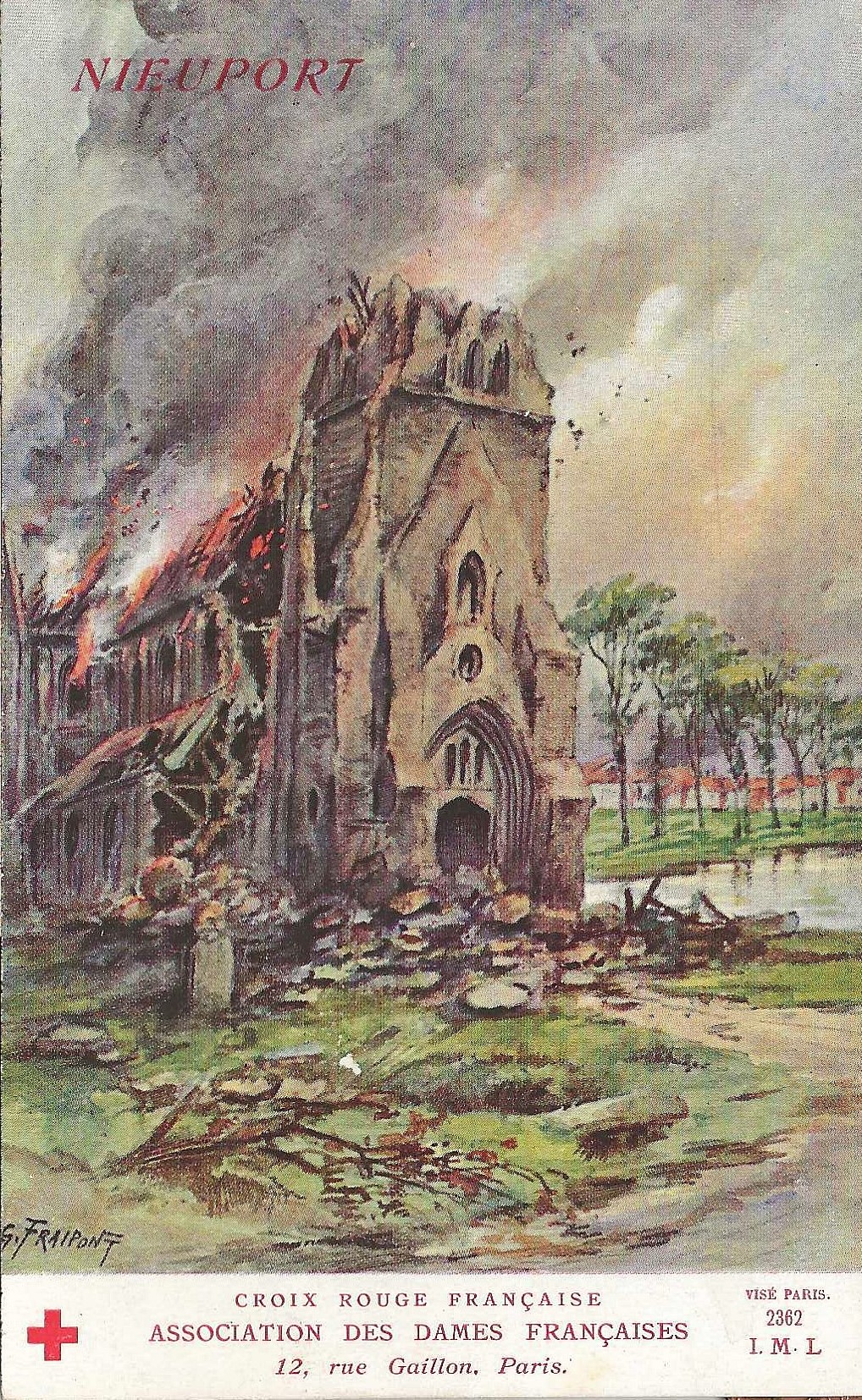
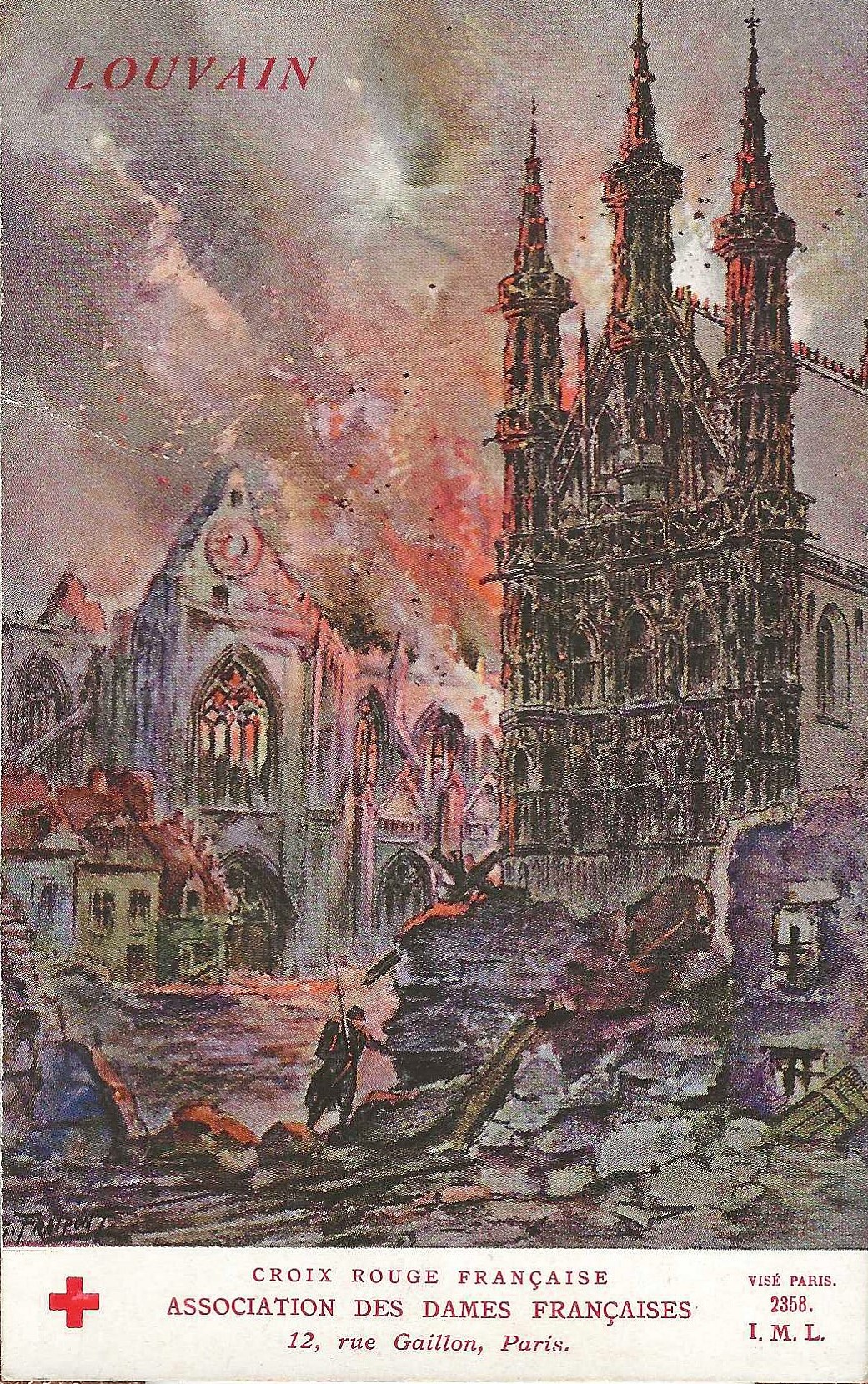
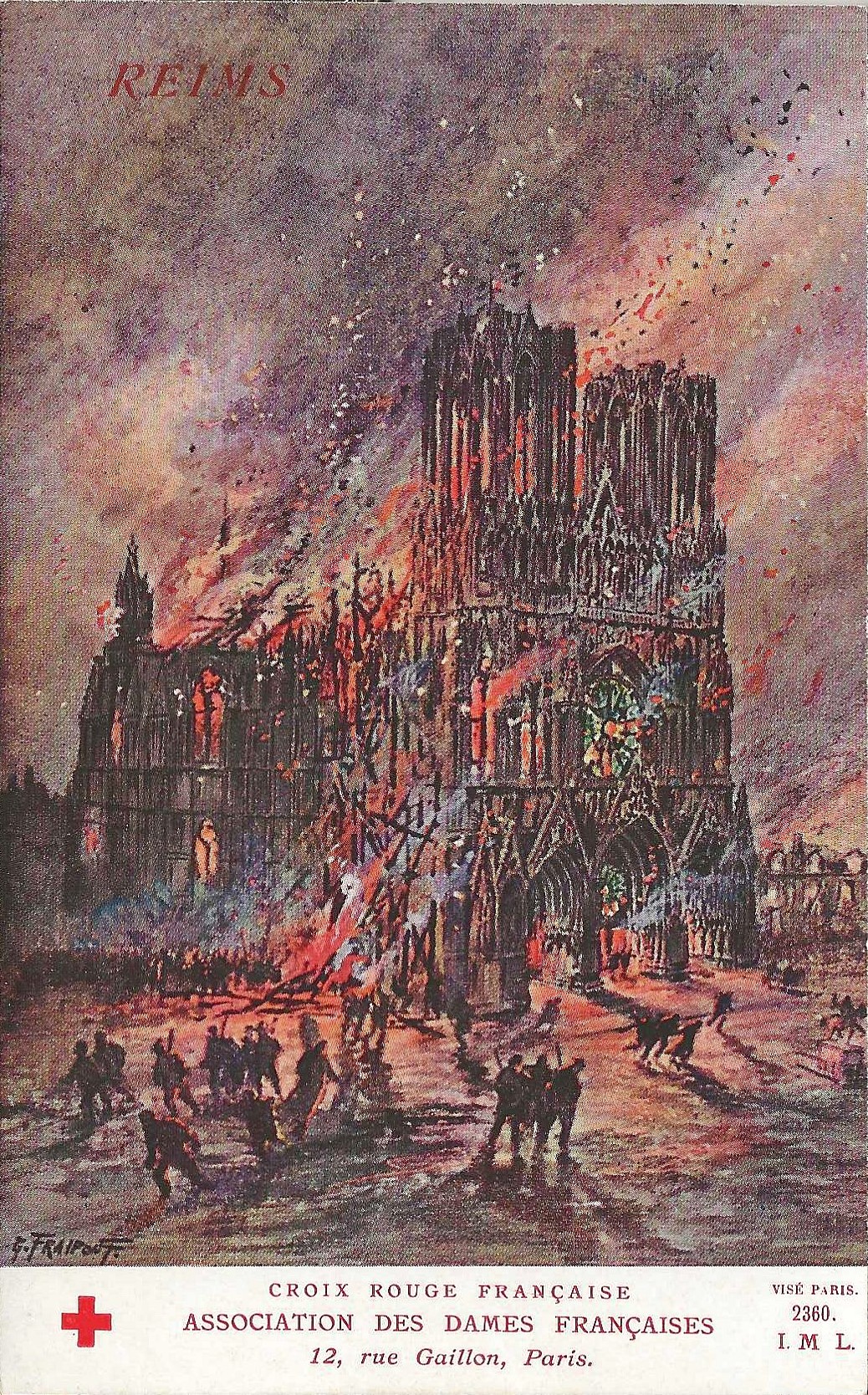
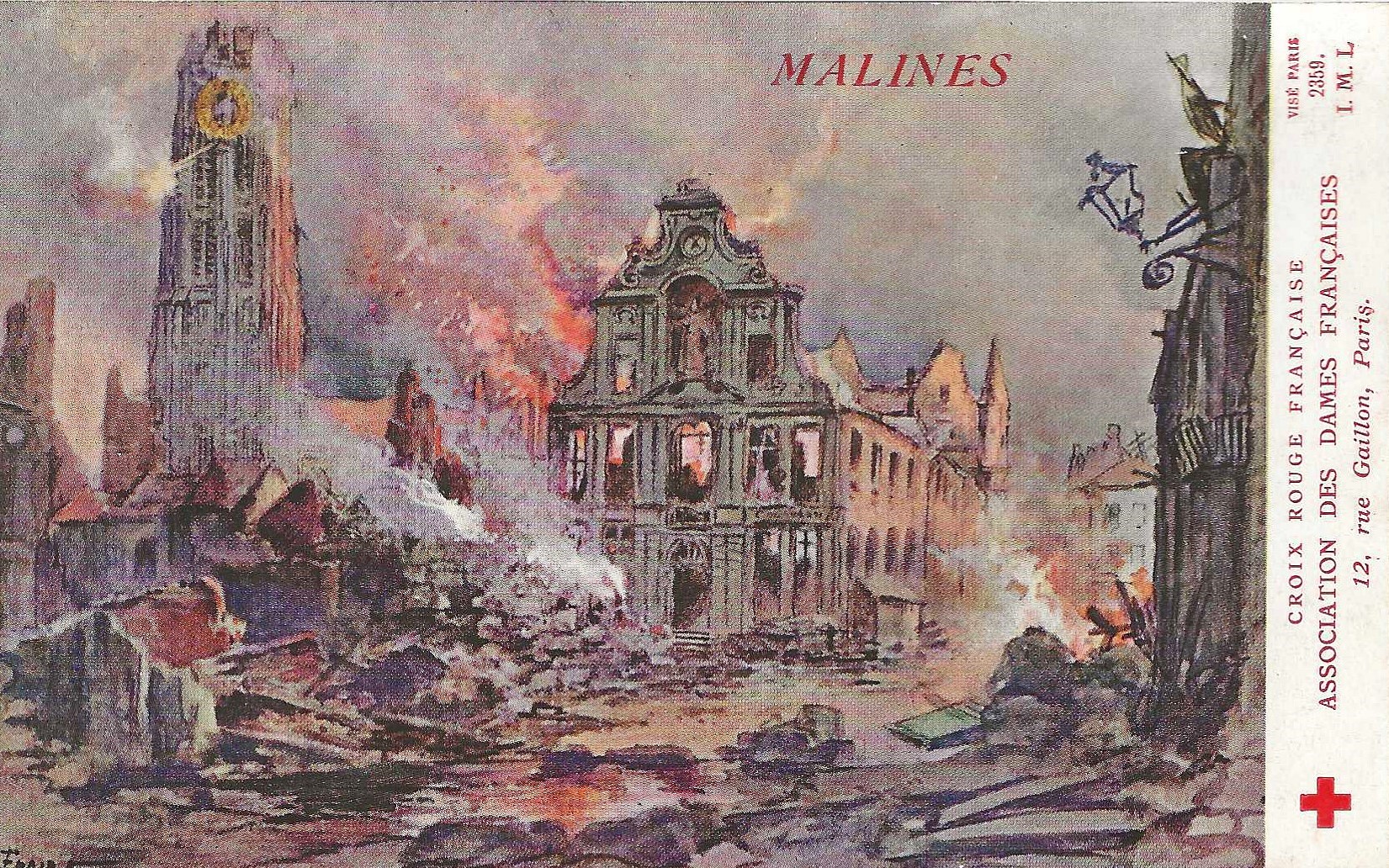



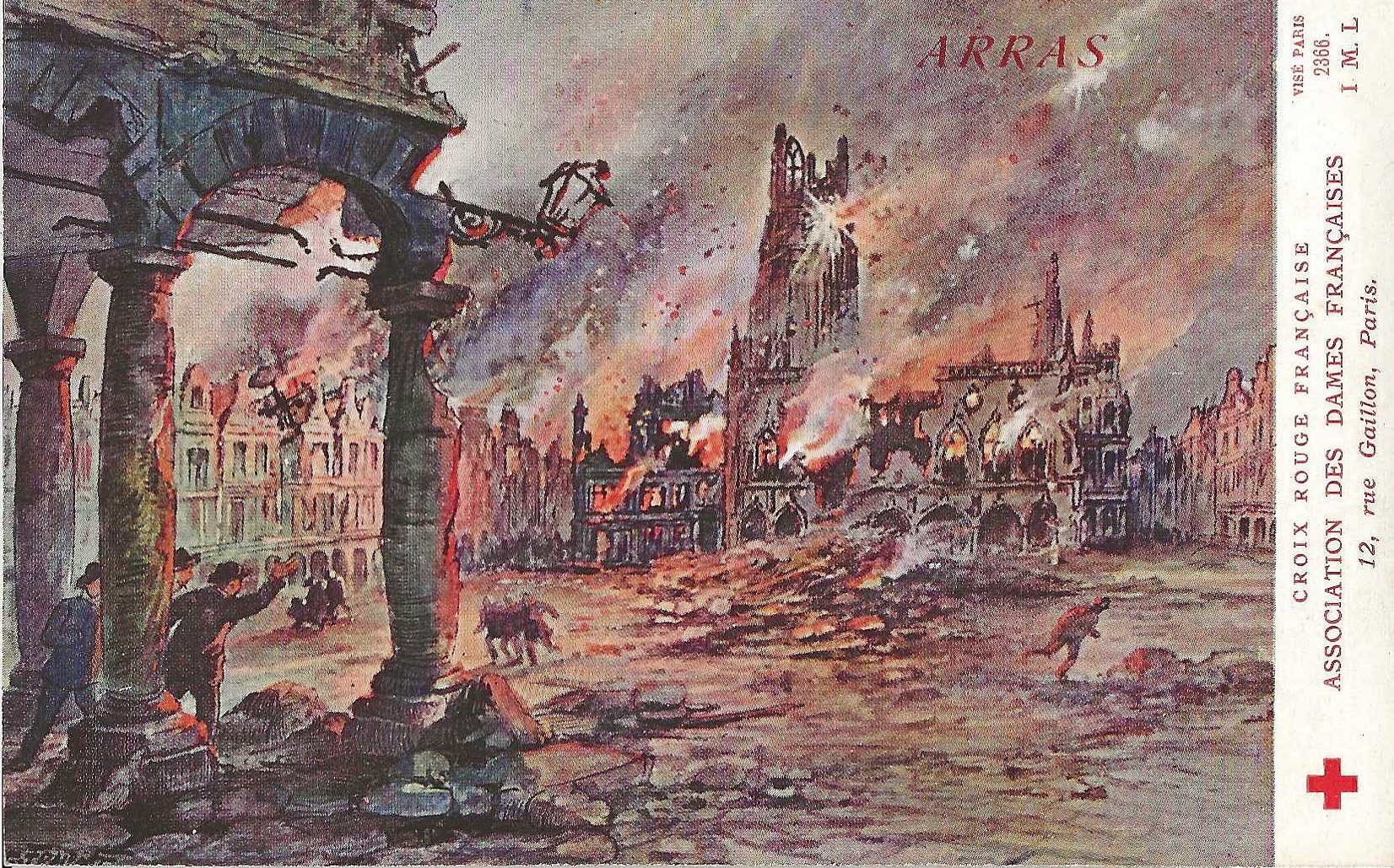
I had heard of the destruction in Louvain and Ypres, but several of these town names were new to me.
I was unaware of these postcards. What strikes me about them is that, even though the scenes depicted are horrific, Fraipont has made them beautiful.
I agree with Violet, but add that I hope this doesn’t encourage anyone to fiery acts of violence as too many have been perpetrated in these times. I doubt that any postcard collectors have time for this kind of evil deeds.